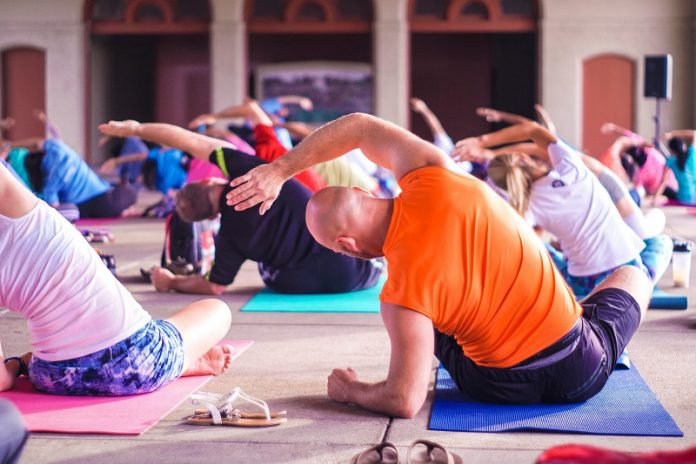
A healthy heart is always essential but especially during the current pandemic.
People with heart disease and other medical conditions appear to be at higher risk for more severe symptoms or complications if they contract COVID-19.
Scientists continue to learn more about the virus while working to develop a vaccine.
In the meantime, a heart-healthy lifestyle can help in coping with the coronavirus, said Dr. Gina Lundberg, clinical director of the Emory Women’s Heart Center in Atlanta.
People with serious heart conditions, Type 2 diabetes, cancer and obesity are among those at increased risk of severe illness with COVID-19, according to the Centers for Disease Control and Prevention.
Those with high blood pressure, immune system deficiencies and lung diseases and stroke survivors also might be at increased risk.
“If you’re a heart patient, you are more likely to have severe symptoms and less likely to be asymptomatic.
And you can get very sick very quickly,” said Lundberg, a preventive cardiologist.
Some patients with COVID-19 experience racing heartbeats, abnormal heart rhythms, congestion and shortness of breath. Complications can include pneumonia and blood clotting.
Aim for optimal heart health
To improve heart health, follow the American Heart Association’s Life’s Simple 7, involving simple changes everyone can make.
The seven steps are eating a nutritious diet, staying physically active, losing excess weight, managing blood pressure, controlling cholesterol, reducing blood sugar, and quitting smoking.
Some of Lundberg’s patients are now taking the opportunity to walk more in their neighborhoods or nearby parks and to eat more fruits, vegetables and lean meats at home.
One patient who previously traveled for business and frequently ate out lost 40 pounds during the past few months with a new at-home routine of healthy eating and exercise.
It’s a much better strategy than sinking into excessive eating, drinking and sedentary time during the COVID-19 shutdown, Lundberg explained.
Structure can be useful if you are mostly staying home during the pandemic. Plan for nutritious meals at designated, convenient times, suggested Linda Van Horn, chief of nutrition in the department of preventive medicine at Northwestern University’s Feinberg School of Medicine in Chicago.
Ideally, every meal or snack should include a fruit or vegetable, she said. Look for seasonal fresh produce you enjoy. If fruits are ripening too fast, consider washing, slicing and freezing them for later use in smoothies, breads and yogurt or to flavor a glass of still or sparkling water.
Reducing or eliminating restaurant eating – a necessity in many communities because of COVID-19 – can help with healthy eating and losing weight.
“We all enjoy taking a break from cooking,” Van Horn said. But home-prepared meals typically are more nutritious with fewer calories, salt, sugar and fat. More nutrients and fiber can be added as a side dish or salad.
Try something new – and healthy
If you’re not accustomed to cooking, start by choosing a favorite meal. Look up the recipe online to learn the ingredients and preparation techniques, and then give it a whirl, Van Horn suggested. You may be surprised how easy it is to become a budding chef.
Battle the urge to eat because of stress or boredom by instead having a glass of fruit-infused still or sparkling water or a cup of hot tea or coffee.
Remember to avoid sugar-sweetened beverages, which can contribute to weight gain. Another way to avoid mindless eating is to take a quick walk around the block and remind yourself your next meal is coming soon.
Exercising outdoors is fine if you practice physical distancing by remaining at least 6 feet away from others. Indoor gyms raise a concern because of close contact with others who are huffing and puffing, Lundberg said. Wear facial coverings in public to help prevent you and others from getting COVID-19.
Manage stress to aid in boosting your overall health by trying activities like yoga and meditation. Stay socially connected. It’s possible to visit with family and friends while taking precautions to guard against spreading illness.
Consider an online meetup. Or, organize a small gathering of neighbors, friends or fellow faith community members and set up folding chairs 6 feet apart outdoors.
“You can be with people. You just can’t be close up with people,” Lundberg said. “Stay positive, be innovative, find ways to do things that are safe.”
Check in with your doctor
It’s important to take prescribed medications and stay in touch with your regular doctor. Telemedicine appointments may be available to avoid visiting a clinic in person. To learn about managing your cholesterol and to check your risk for heart disease and stroke, use the American Heart Association’s Check. Change. Control. Calculator.
Heart disease is the leading cause of death in the United States, and heart disease and stroke are among the costliest health problems, leading to medical bills and potentially lost wages and disability. The total direct medical costs of cardiovascular disease are projected to increase to $749 billion by 2035.
Months from now, researchers will know even more about the coronavirus and how heart disease and many medical conditions interact with it, Lundberg said. As scientists continue their work, making lifestyle changes and striving for optimal heart health is a positive path we can all take now.
This article was developed by the American Heart Association with financial support from Transamerica.



